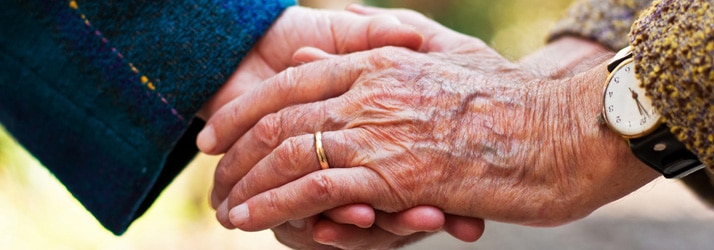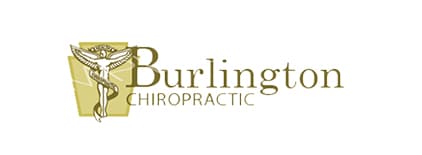Traditional vs. Modern Remedies for Joint Pain

We all know that joints are the connecting junctions between different bones of the body.
We are also aware of the role of joints in maintaining normal mobility, strength and functional independence of musculo-skeletal system.
Besides playing an integral part in promoting mobility, joints also serves to support the tissues and vital organs during movement or even at rest.
But are you aware that a human body has over 206 bones but almost 230 joints?
Yes, indeed, human body is supported and connected via extensive architectural framework of 230 joints to provide flexibility with function while protecting vital organs like heart, lungs and brain and harboring bone marrow for circulatory, neurological and immunological support.
It is also understandable that throughout our lifetime, these joints are exposed to excessive pressure, stress and strain intentionally and unintentionally leading to wear and tear changes that may present as joint pain and discomfort.
According to latest estimates, the prevalence of joint pain and discomfort in United States is 33% that corresponds to approximately 69.9 million individuals; however, only one third of these patients (10.0% or about 21 million adults) are actually diagnosed by physicians while remaining individuals are unaware of their disease status (and remain unaware until major complications develop).
What are the consequences of poorly managed joint pain?
Moderate to severe injury to joint (due to trauma or disease process) can directly affect physical movement and may cause pain, stiffness and discomfort even at rest. Joint pain is indeed one of the most common complaints and can affect any part of the body from shoulders to ankles and beyond. In fact, according to a latest research, a previous episode of joint pain is one of the most recognized risk factors that may increase your chances of developing future episodes of joint pain. This is because:
As discussed previously, all bones and joints are somehow linked and connected with the help of neurological and circulatory components. Disease process that affects one part of the joint soon extends to involve surrounding tissues and may initiate a vicious cascade
Secondly, inflammation or disease process involving one or more joints indicate an ongoing pathological process. If no intervention is taken, poor dietary or lifestyle choices may affect the well-being of other joints as well.
According to a national survey more than 25% individuals report pain and discomfort of multiple joints. Although, elderly population is at higher risk of developing joint pain, virtually any individual with a risky lifestyle can experience acute or chronic joint pain.
How to manage Joint Pain?
There are severe therapeutic protocols available that can be used to be manage joint pain:
Over the counter analgesics and other prescription/ non-prescription Medications:
If a person is experiencing moderate to severe joint pain accompanied with swelling (that is suggestive of active inflammation), simple drugs like OTC NSAIDs (non-steroidal anti-inflammatory drug) can be consumed. This include ibuprofen (Motrin, Advil), naproxen sodium (Aleve) or aspirin that are effective for immediate yet temporary relief. NSAIDs newer generation – Cox-2 inhibitors (Celebrex) can also be used for pain relief that is less likely linked to gastric ulceration.
But is it safe to consume these drugs for long term?
The new generation Celebrex became extremely popular after release; however, recently FDA has withdrawn this drug from market due to its high association with stroke, heart attack and several other cardiovascular conditions. Potentially NSAIDs are also associated with side effects on long term use (such as dyspepsia, gastric ulceration and gastrointestinal bleeding).
People with mild joint pain without swelling can use acetaminophen (Tylenol). It is important to be cautious while consuming these drug especially if you consume alcohol due to aggravated risk of liver injury.
People experiencing severe pain which is not effective with Cox-2 and NSAID medicines, are usually prescribed stronger opioid drugs. These medicines can make a person drowsy therefore only be used under doctor’s prescription.
Other medicines which may help in relieving pain include:
Muscle relaxants for treating muscle spasms
Some antiepileptic and antidepressants drugs
Topical Agents
Capsaicin is the active compound that is found generally in chili peppers. This herbal agent has the capacity to provide relief from joint pain in acute arthritis and other similar conditions. Capsaicin decreases the production and release of pain producing mediators such as P substance that is responsible for physical perception of pain. It also releases other chemicals – such as endorphins in the body that blocks pain signals and induce the sensation of pleasure. Capsaicin cream is commercially available along with numerous other herbal agents that can be applied locally to reduce joint pain and swelling.
Intra-articular injections
People who do not get much benefit from oral medication are generally advised steroids injections that are directly introduced in the joint cavity after every three to four months. These injections are used commonly by patients with long standing inflammation, extensive joint disease and severe arthritis.
Other injection alternatives include:
Removing the fluid from joint (which is usually done in combination with steroid injection)
Hyaluronic acid injections- a synthetic version of natural fluid present in joints. This is used for treating osteoarthritis or conditions in which synovial fluid secretion decreases significantly due to joint destruction.
Alternative Treatments
According to the some researchers chondroitin sulphate and glucosamine supplements can help in reducing joints pain and enhance functional independence of joints. These two proteins are a normal constituent of skeletal tissue framework that aims at reducing friction across cartilage and joint cavities. Chondroitin and glucosamine supplements are available in the form of liquid, powder, tablet or capsules. However these supplements do not suit every person and therefore optimal caution must be obtained.
Physical Therapy
Physical therapy exercises (or instrumental pain relieving strategies) via an expert physical therapist is another healthy option that can be used to alleviate pain and discomfort. Physical therapy exercises not only stabilize joints but also enhance overall range of motion by decreasing stiffness. There are several techniques a therapist can use including:
Cold or heat therapy
Ultrasound electrical nerve manipulation and stimulation
Weight management
Lifestyle modifications
Massage therapy
Acupuncture
According to a research published in the peer reviewed journal Osteoarthritis and Cartilage (3) author suggested that complementary and alternative strategies are employed by 43% of the general population for the management of joint pain. Approximately 24% individuals utilize both conventional western medicine and alternative medicine simultaneously to achieve promising results. If you are experiencing chronic health issues, it is highly recommended to seek the advice of a holistic practitioner such as chiropractor to learn your options.
References:
http://www.cdc.gov/mmwr/preview/mmwrhtml/mm5142a2.htm
Macfarlane, G. J., El-Metwally, A., De Silva, V., Ernst, E., Dowds, G. L., & Moots, R. J. (2011). Evidence for the efficacy of complementary and alternative medicines in the management of rheumatoid arthritis: a systematic review. Rheumatology, 50(9), 1672-1683.
Lapane, K. L., Sands, M. R., Yang, S., McAlindon, T. E., & Eaton, C. B. (2012). Use of complementary and alternative medicine among patients with radiographic-confirmed knee osteoarthritis. Osteoarthritis and Cartilage, 20(1), 22-28.
OFFICE HOURS
Monday
8:30am - 12:30pm
2:30pm - 6:30pm
Tuesday
Closed
Wednesday
8:30am - 12:30pm
2:30pm - 6:30pm
Thursday
2:30pm - 6:30pm
Friday
8:30am - 12:30pm
Saturday
Closed
Burlington Chiropractic
218 West Broad Street
Burlington, NJ 08016
(609) 747-1100


